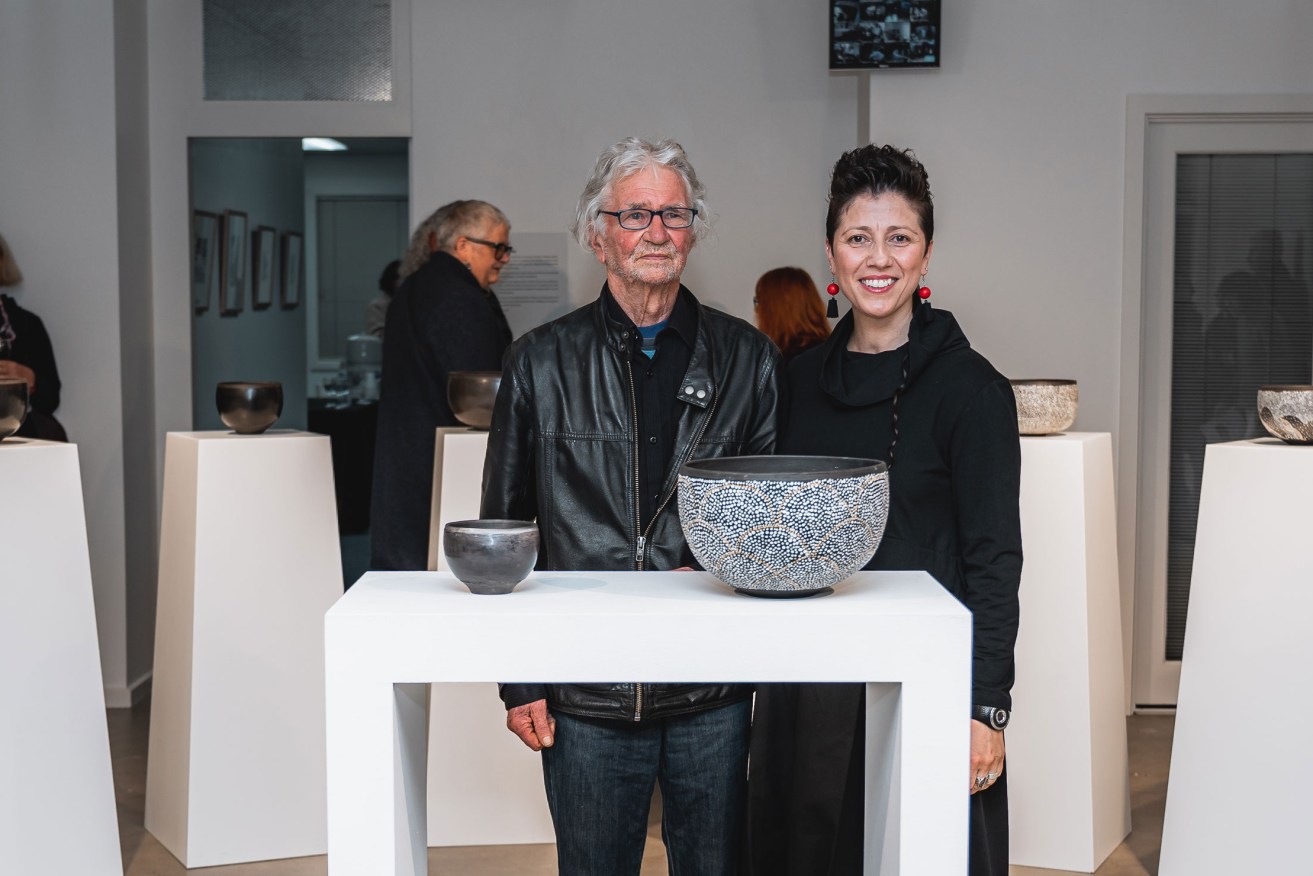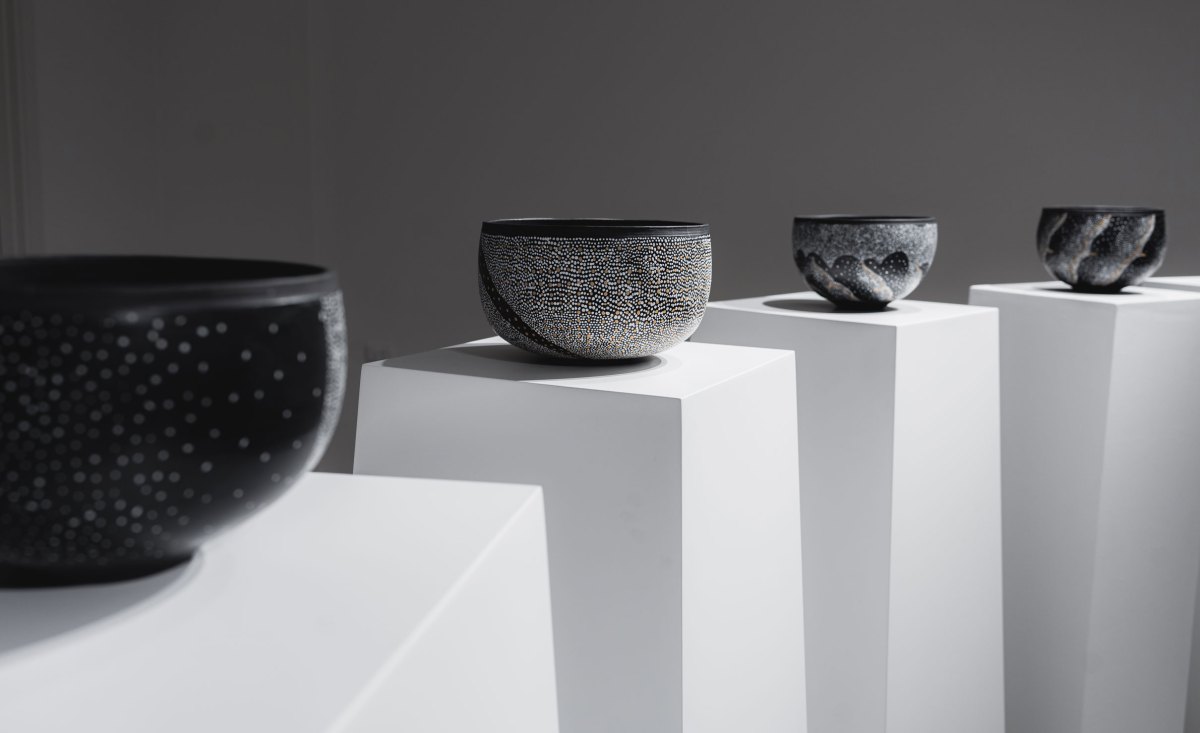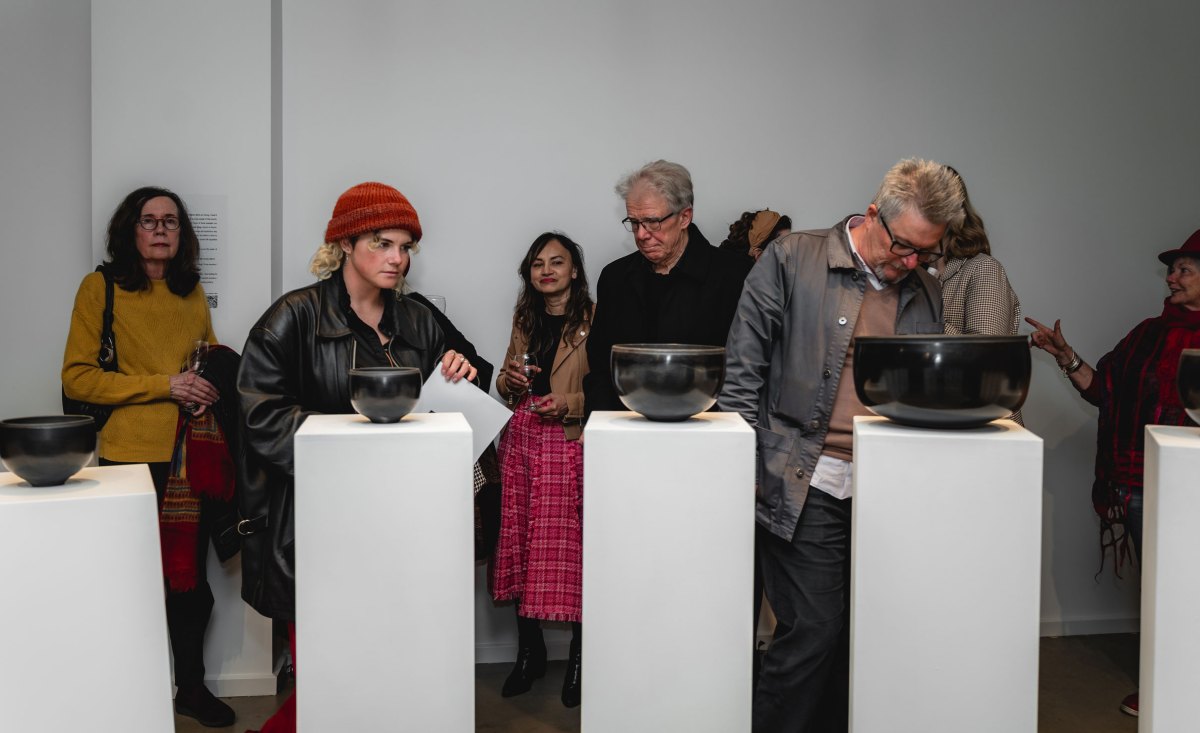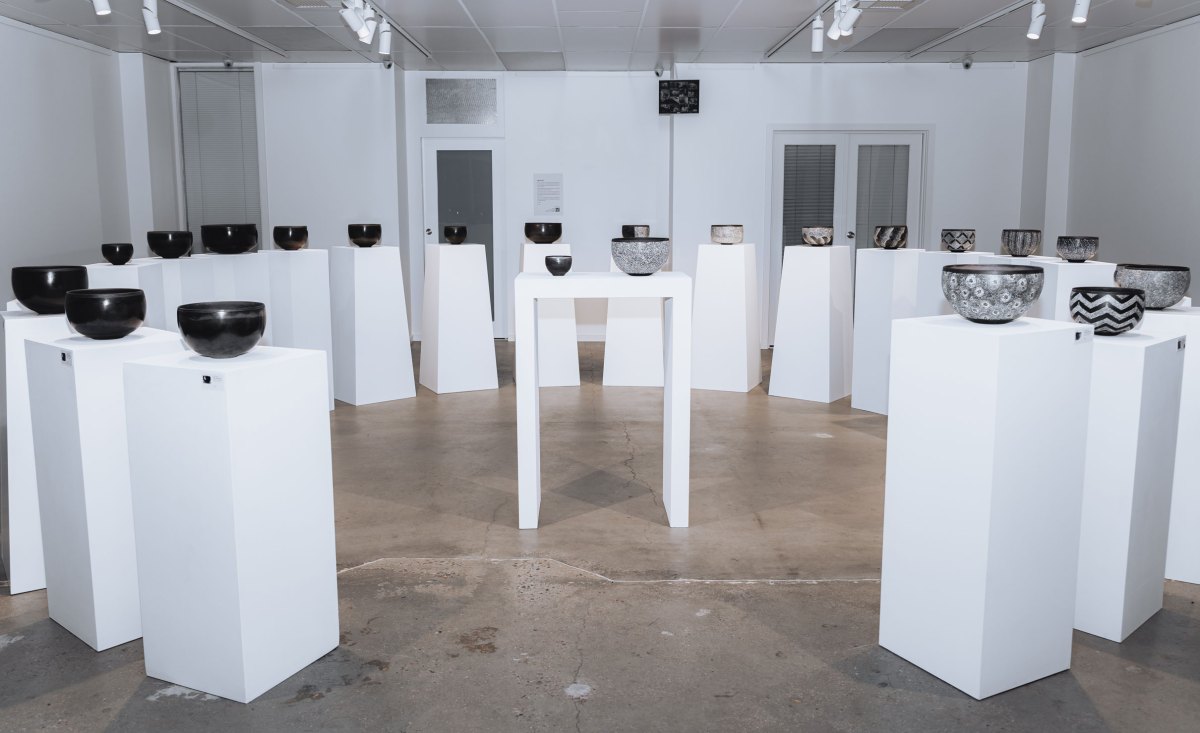Night and Day: A creative meeting of minds
An unsent fan letter, the discovery of a 30-year-old magazine in a dusty archive of craft journals in Mount Isa, and a final creative meeting of minds lie behind the exhibition of celebrated ceramicist Petrus Spronk at The Main Gallery in Halifax Street.


Petrus Spronk with The Main Gallery director Özlem Yeni at the opening of the 'Night and Day' exhibition. Photo: Zac Xiansze Loh
In 2016, Özlem Yeni, a Turkish artist, university lecturer and set designer, lands in the dusty heat of the mining town of Mount Isa in Queensland and decides to enrol in some clay workshops.
She has completed one course on clay building and has enjoyed it, but she is struggling with the next unit: wheel turning. “After all, whatever you do with a wheel, it will only make a circular object. ‘Not much room for creativity,’ I thought,” Yeni says.
Seeking inspiration, she goes to the clay club’s archives, and discovers a collection of hard-copy craft magazines glazed with dust. She wipes the dust off one copy of a journal called Craft arts from February/April 1987.
1987! She was only 12.
“Nobody uses hard-copy magazines any more. They use Pinterest or go online,” she says. It’s another era. Nevertheless, she begins casually leafing through the magazine.
Suddenly Yeni strikes gold!
Confronting her are images of deceptively simple black bowls, but the potter has carefully broken the bowl then fired the shards. He has black fired some and left others in the original terracotta. Then he has restored the bowl. In some of the bowls there are tiny lines of gold leaf etched in the cracks.
Yeni says she was particularly moved that author had visited and lectured in her native Turkey and learned clay techniques there. In the article, the author describes walking in the limestone desert of Turkey when he sees a brilliant turquoise-coloured tiled dome. He sees the dome as a bowl reversed. Entering the mosque, he sees a text on a wall:
The form, the earth
the decoration, the sky
the form, the male
the decoration, the female
the form, the material
the decoration, the spirit
the form, the man, the decoration
the artist
All(ah) is one
“The quote was very emotional but it was again in very simple words,” Yeni says.
The article, titled “Glimpses of Essence”, is written by a Petrus Spronk, described as a ceramicist/wayfarer. On the first page, Yeni notices a black and white picture of a Rasputin lookalike with long hair, straggly beard and piercing eyes. His arms are strongly muscled and he holds a large, black burnished bowl in one hand.
“I had goosebumps. I loved it. I loved the idea of using different shapes for the bowls. I also loved how strong they were – the shape and the design – even though they were so simple. It was like ‘less is more’.”
Yeni starts writing a fan letter, but doesn’t like it. Naturally, it has to be written in English and her English isn’t very good, yet. It’s embarrassing. She doesn’t send it, but keeps it.
Events take over.
Several years later, in 2019, Yeni and her husband move to Adelaide and, right at the beginning of COVID, she starts a gallery: The Main Gallery in Halifax Street. Her studio is in the gallery – as are all her papers, including the discarded letter to Petrus Spronk. There’s no time to sort them out before the grand opening, the night before the national lockdown.
After the opening, she has time to look through her personal papers and discovers the letter again. This time, she says, she loves it.
“It was so naïve. Full of joy at discovering his work and the Turkish connection.”
She finds Spronk’s email and sends a more mature version of the letter, just hoping for a response. Within a few hours, Petrus Spronk replies.
Soon Yeni arranges a visit to his Bald Hill studio in Daylesford in Victoria, and from there they develop the idea of Night and Day, an exhibition at her gallery.

An installation view of Petrus Spronk’s works in Night and Day. Photo: Zac Xiansze Loh
Why did Spronk agree to the exhibition?
“I liked her energy,” he says. Now 82, he says at his stage of life, “you owe it to encourage younger people”.
“I don’t even consider being old. I just keep on working and if I am not able to ‘entertain’ the creative spirit any more, I would give up on my life. The creative spirit is my life force and keeps me going.”
Still, life hasn’t given him an easy run. This spirit has helped him power through or around 13 years of Parkinson’s disease and bouts of cancer.
According to Spronk, the genesis of those bowls in the 1987 article was the Ash Wednesday bushfires. The bowl incarnates some of the cracks in the arid landscape. He noted the burned landscape after flying across it a few days after the Ash Wednesday fires, with the terracotta representing the wheel tracks across the burned landscape and the gold reflecting a bit of water glistening in the dams.
If they give you lined paper, write the other way
In the 1987 article, Spronk rejected the term “potter” or “ceramicist”, calling himself a traveller. Now, he rejects the term “artist”. “I’m not comfortable with that term, that label [artist]. I’m just a creative person that happens to work with clay.”
Born in 1939, Spronk came to Australia at the age of 18 from Holland, where he had been apprenticed to a baker. He soon had a job doing the “fine work, the decorative work” in a bakery in Glenelg. He says he learned helpful life lessons during his apprenticeship. “Besides, you can learn from any experience.”
“One of the teachers said: ‘You’ve got talent. You should be a teacher.’ And that gave me the courage to apply for a course in fine arts. I applied for a course in the arts school but I didn’t have my leaving certificate at the time, so I had to do that first, and then I was accepted into the art school. I straight away did very well because I felt at home in the art school.”
Among his teachers was the celebrated potter Milton Moon. Spronk says Moon taught him to take his own path.
“I have a slide with no words that I show at the end of my talk. There’s a flock of birds flying one way and one bird flying the other. I took notice of a saying I carry with me: ‘If they give you lined paper, write the other way.’”
But he rejected another of Moon’s suggestions. “He also taught with some force that I should learn about glazes, which I didn’t like at all.”
Instead, Spronk has focused on the technique of burnishing – polishing the clay by rubbing it with a very smooth stone before the bowl is fired to make the clay, to some extent, more non-porous – and creating the black colour.

Guests at the exhibition opening at The Main Gallery admire Petrus Spronk’s signature black burnished bowls. Photo: Zac Xiansze Loh
Black burnished bowls have been a lifelong obsession. Spronk left Australia in 1975 and travelled for eight years during which he “learned from those who had been before me”. This included the Pueblo people in New Mexico, make beautifully burnished black bowls.
He remembers sitting at night with an old Pueblo man “who pointed out the setting new moon, a silver sliver in the pale mauve sky. ‘We call that cosmic bowl, the receiver,’ the old man said, and I found that notion poetic. That excited me enough to take that on as a life journey.”
Spronk says for him, “everything becomes relevant to the making of a bowl”. “The path of the bowl is like my creativity,” he says, describing his process as a series of doors opening with each decision.
“I decided to choose clay as a material so I see that as a door, a door into the many doors of the art world: painting, sculpture, printing, etc. I open the ‘clay’ door and am faced with many new doors – wheel work, hand building, etc. I choose another door that says, ‘black, burnished’.
“If you focus on these things, they open up another door and another door and another door, so everything becomes relevant to the making of a bowl… again I am faced with more doors, the doors are choices and so you enter into the inner world of your creative spirit.”
In 1987, he wrote: “Each bowl I make represents a discovery, a step along the way. Each bowl also represents a brief pause, a moment of reflection. It tells me where I am on my journey…”
Adelaide should count itself fortunate that Spronk’s journey has led him to Özlem Yeni, via the dusty archive of craft magazines in Mt Isa, and back to Adelaide after a nearly 40-year absence.
The exhibition Night and Day is at The Main Gallery, 156 Halifax Street, until June 25. On Friday, June 10, there is a meet-the-artist event from 2pm. On June 11 at 2pm, Spronk will present an artist talk.

Night and Day features 12 of Petrus Spronk’s black burnished bowls and 12 painted bowls. Photo: Zac Xiansze Loh




